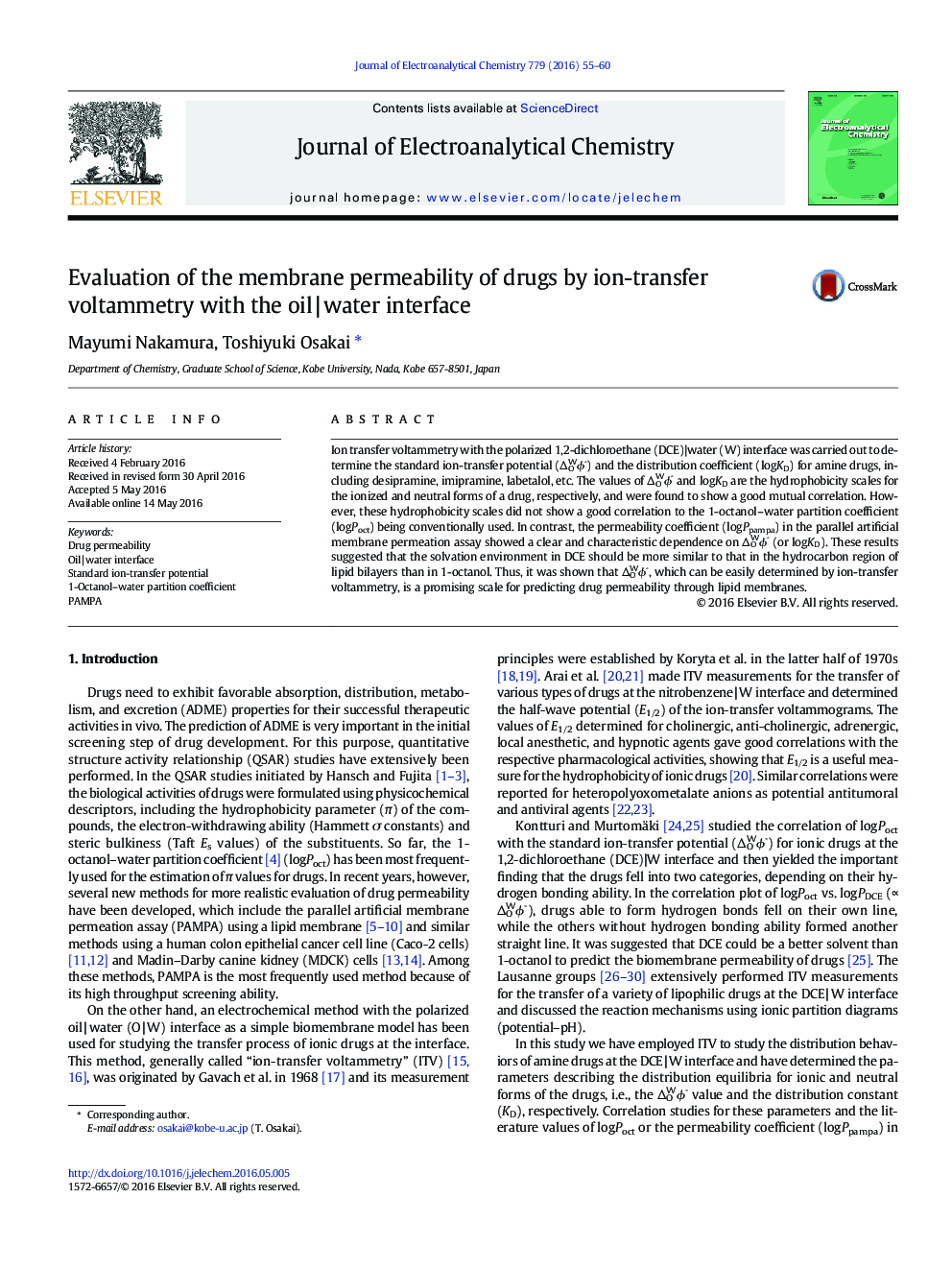| Article ID | Journal | Published Year | Pages | File Type |
|---|---|---|---|---|
| 4908302 | Journal of Electroanalytical Chemistry | 2016 | 6 Pages |
â¢Ion-transfer voltammetry was performed for amine drugs at the DCE | water interface.â¢The standard ion-transfer potential is useful for predicting drug permeability.â¢This index would be more available than log P in the octanol-water system.
Ion transfer voltammetry with the polarized 1,2-dichloroethane (DCE)|water (W) interface was carried out to determine the standard ion-transfer potential (âOWÏâ) and the distribution coefficient (logKD) for amine drugs, including desipramine, imipramine, labetalol, etc. The values of âOWÏâ and logKD are the hydrophobicity scales for the ionized and neutral forms of a drug, respectively, and were found to show a good mutual correlation. However, these hydrophobicity scales did not show a good correlation to the 1-octanol-water partition coefficient (logPoct) being conventionally used. In contrast, the permeability coefficient (logPpampa) in the parallel artificial membrane permeation assay showed a clear and characteristic dependence on âOWÏâ (or logKD). These results suggested that the solvation environment in DCE should be more similar to that in the hydrocarbon region of lipid bilayers than in 1-octanol. Thus, it was shown that âOWÏâ, which can be easily determined by ion-transfer voltammetry, is a promising scale for predicting drug permeability through lipid membranes.
Graphical abstractDownload high-res image (108KB)Download full-size image
